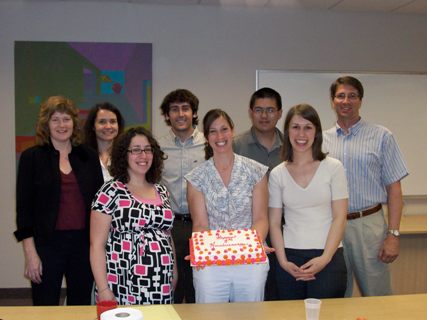 At The Improve Group, we work with surveys and survey data nearly every day. Surveys are a great method for reaching a large audience in a cost-effective manner, but they also have their drawbacks. The people you’re interested in reaching are not always motivated to take the survey and return it back to you.
At The Improve Group, we work with surveys and survey data nearly every day. Surveys are a great method for reaching a large audience in a cost-effective manner, but they also have their drawbacks. The people you’re interested in reaching are not always motivated to take the survey and return it back to you.
October 22, 2008 - 8:51am
June 16, 2008 - 2:19pm
April 28, 2008 - 8:49am
I had the good fortune to meet Karen Anderson a couple years ago at the Minnesota Council of Nonprofits Conference in Saint Paul. At that time, she was working on launching her new website, the NonprofitRFPExchange. It was exciting to hear about all the ideas she had for creating a helpful resource for nonprofits.
April 21, 2008 - 11:43am
Chicago Opera Theater's Opera for All program brings professional performers into K-12 Chicago classrooms for a rigorous opera experience tied to the Theater's premier performance of the season. This year, Chicago Opera Theater is debuting a new opera called A Flowering Tree. Each class learned about the opera itself, as well as musical concepts, culture and the arts and the history and context of opera as an art form. Each class has a culminating performance -- with student responsibilities including writing, performing, directing, and set and costume design.
April 2, 2008 - 10:40am
 This morning, we heard a familiar voice on Minnesota Public Radio! Our client, Judy Schoenberg of Girl Scouts of the USA (GSUSA), was a guest on the Midmorning program. She spoke about leadership and self-esteem development in girls and how Girl Scouting has changed throughout the years.
This morning, we heard a familiar voice on Minnesota Public Radio! Our client, Judy Schoenberg of Girl Scouts of the USA (GSUSA), was a guest on the Midmorning program. She spoke about leadership and self-esteem development in girls and how Girl Scouting has changed throughout the years. March 31, 2008 - 9:43am
 It seems like everyone is interested in healthcare these days. With the cost of care growing so rapidly, it’s no wonder that this topic piques the interest of so many people, from politicians to employers to the “average” working Jane or Joe. While many people believe that healthcare in America needs changing, there are no easy solutions to this problem.
It seems like everyone is interested in healthcare these days. With the cost of care growing so rapidly, it’s no wonder that this topic piques the interest of so many people, from politicians to employers to the “average” working Jane or Joe. While many people believe that healthcare in America needs changing, there are no easy solutions to this problem. February 15, 2008 - 10:56am
Here is a tale for anyone that has been surprised by evaluation results:
February 8, 2008 - 11:09am
by Leah Goldstein Moses
In our evaluation and strategic planning work, we are increasingly emphasizing "authentic" data when developing a design with our clients. What I mean by authentic data is that as often as possible, we ask people directly how they have experienced a service and changed as a result. When the people experiencing a service are young kids, or have a different language or cultural reference from the person who is doing the study, it is vitally important to check to make sure you are interpreting results correctly.
February 7, 2008 - 4:06pm
 I often listen to the radio while writing and was startled to hear two clients in the news today.
I often listen to the radio while writing and was startled to hear two clients in the news today.

